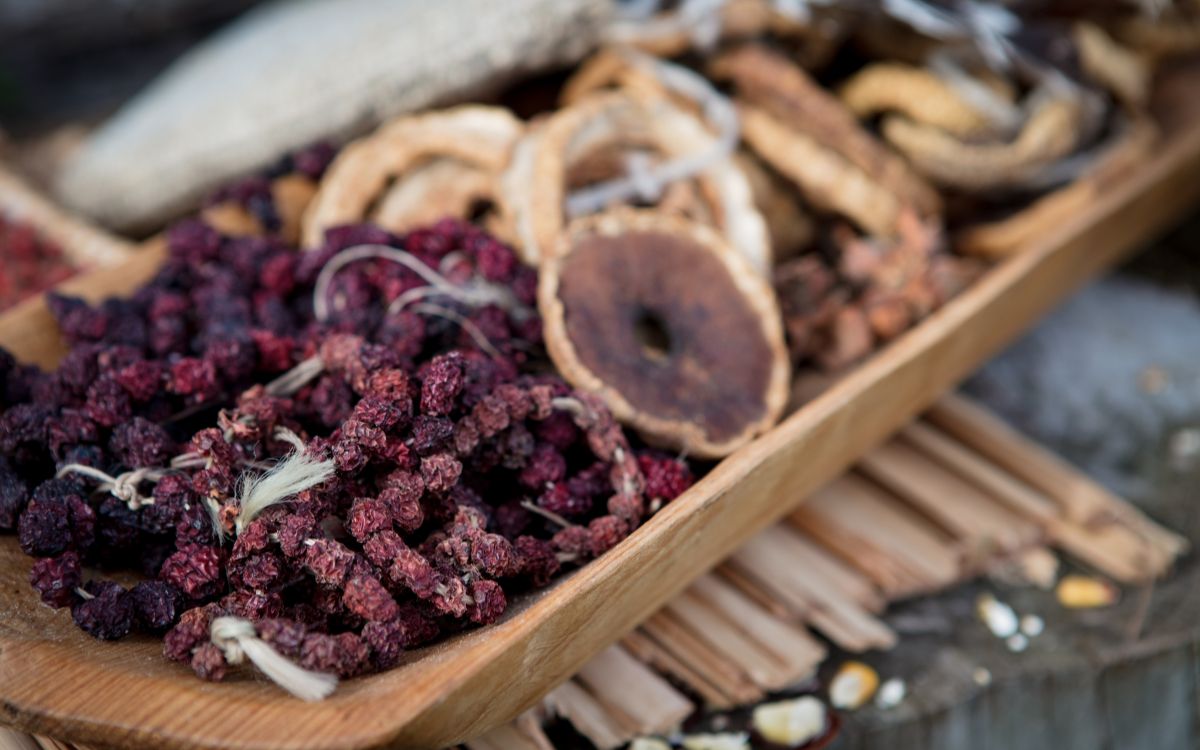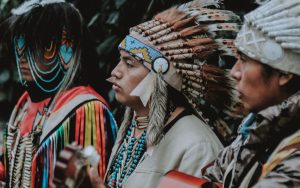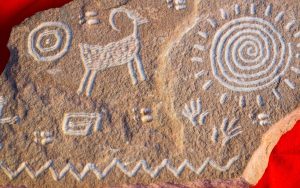The Native American food culture is a rich tapestry woven with centuries of tradition, diversity, and deep-rooted connections to the land. It is a testament to the resilience and resourcefulness of Indigenous peoples across North America. However, the evolution of Native American food culture is a complex story influenced by historical events, colonization, and the ongoing efforts to preserve and revitalize ancestral foodways.

Understanding this evolution is crucial in appreciating the profound significance of Native American cuisine and its impact on culinary heritage. In this blog post, we will explore how Native American food culture has evolved over time, from pre-colonial traditions to contemporary innovations, highlighting the challenges and opportunities faced along the way.
Pre-Colonial Native American Food Culture
Pre-colonial Native American food culture encompassed a vast array of traditions and practices across different tribes and regions. Each tribe had its unique culinary heritage, influenced by the local environment and available resources. The food culture revolved around a deep respect for nature, sustainable practices, and a close connection between food and spirituality.
Staple Foods of Native American Tribes
Native American tribes relied on a diverse range of staple foods that sustained their communities. Corn, beans, and squash, known as the “Three Sisters,” formed the foundation of agricultural practices. These crops were grown together in a symbiotic relationship, with each plant providing essential nutrients to the others. Other staple foods included wild rice, potatoes, sunflower seeds, and various types of berries.
Traditional Cooking Methods and Techniques
Native Americans employed a variety of cooking methods that showcased their ingenuity and resourcefulness. Cooking techniques such as roasting, boiling, steaming, and baking in earth ovens or clay pots were commonly used. Smoking, drying, and fermenting methods were utilized for food preservation. These traditional techniques enhanced flavors, preserved nutrients, and extended the shelf life of perishable ingredients.
Role of Food in Native American Rituals and Ceremonies
Food held immense cultural and spiritual significance in Native American rituals and ceremonies. Feasting played a vital role in community gatherings, celebrations, and religious ceremonies. It served as a means of expressing gratitude, fostering unity, and honoring ancestral connections.
Traditional foods were often prepared and shared during these occasions, reinforcing cultural identity and the importance of communal relationships. The act of preparing and sharing food was seen as a sacred and communal experience, symbolizing the interconnectedness of all living beings.
Impact of Colonialism on Native American Food Culture
The arrival of European colonizers had a profound impact on Native American food culture, disrupting traditional practices and introducing new elements that shaped the culinary landscape. Colonialism brought significant changes in terms of ingredients, cooking techniques, and agricultural practices, leading to both assimilation and adaptation among Native American communities.
The Arrival of European Foods and Ingredients
European explorers introduced a wide range of new foods and ingredients to Native American tribes. Wheat, sugar, livestock, and various vegetables and fruits were among the unfamiliar items that made their way into Indigenous communities. The integration of these new foods, along with the exchange of culinary knowledge, led to the development of hybrid dishes that blended Native American and European flavors.
Influence of Colonial Farming Practices
Colonization also brought changes in agricultural practices. Native Americans were introduced to European farming methods, such as enclosed fields, plows, and the concept of individual land ownership. This shift from communal land use to private ownership significantly impacted traditional agricultural systems and the communal nature of food production and sharing.
Adaptation and Integration of New Elements into Native American Cuisine
Native American communities demonstrated resilience and adaptability by incorporating new ingredients and culinary techniques into their traditional food culture. They selectively adopted and modified European cooking methods and ingredients, integrating them with their existing practices. This fusion of old and new elements led to the creation of unique dishes that reflected the evolving Native American culinary identity.
Cultural Resilience and Preservation of Native American Foodways
Native American communities have displayed remarkable resilience in their efforts to preserve and revitalize their traditional foodways, reclaiming their cultural heritage and promoting sustainable practices. These endeavors have played a vital role in strengthening Indigenous identities, promoting food sovereignty, and fostering a renewed appreciation for Native American cuisine.
Revitalization of Indigenous Agricultural Practices
One key aspect of preserving Native American foodways has been the revitalization of indigenous agricultural practices. Many tribes have taken steps to reintroduce and promote traditional farming methods, such as planting heirloom seeds, practicing companion planting, and utilizing sustainable farming techniques. These initiatives not only preserve ancestral knowledge but also promote ecological sustainability and food security within Native American communities.
Role of Indigenous Food Sovereignty Movements
Indigenous food sovereignty movements have emerged as powerful advocates for the preservation of Native American food culture. These movements focus on reclaiming control over food systems, ensuring access to culturally appropriate foods, and strengthening local food economies. They emphasize the importance of traditional foods in promoting health, cultural continuity, and self-determination for Indigenous peoples.
Importance of Native American Food Education and Awareness
Education and awareness play crucial roles in preserving Native American foodways. Efforts to educate both Native and non-Native communities about the history, cultural significance, and nutritional value of traditional Native American foods are essential.
This includes initiatives such as culinary workshops, storytelling, and the integration of Native American food culture into educational curricula, fostering a deeper understanding and appreciation for Indigenous cuisines.
Contemporary Native American Food Culture
Contemporary Native American food culture is characterized by a vibrant blend of tradition, innovation, and culinary creativity. Indigenous chefs, culinary enthusiasts, and advocates have played a significant role in reshaping and reimagining Native American cuisine, bringing it to the forefront of the culinary world.
Fusion Cuisine and Culinary Creativity
One notable aspect of contemporary Native American food culture is the emergence of fusion cuisine and culinary creativity. Indigenous chefs are skillfully blending traditional Native American ingredients, flavors, and cooking techniques with global culinary influences, creating exciting and innovative dishes that celebrate their cultural heritage while appealing to modern tastes.
Celebrity Chefs and Indigenous Food Advocates
The rise of Indigenous celebrity chefs and food advocates has brought Native American cuisine into the spotlight. These influential figures have used their platforms to promote Indigenous culinary traditions, raise awareness about food sovereignty issues, and challenge stereotypes. Their work has not only elevated Native American food culture but also inspired a new generation of Indigenous chefs and culinary entrepreneurs.
Native American Food Festivals and Events
Native American food festivals and events have become platforms for showcasing the diversity and richness of Indigenous culinary traditions. These gatherings bring together Indigenous chefs, artisans, farmers, and community members to celebrate and share their food culture with the wider public. Such events provide opportunities for cultural exchange, education, and appreciation of Native American cuisine.
Challenges and Opportunities in Native American Food Culture
Native American food culture faces a range of challenges and opportunities in the modern era. Addressing these challenges and embracing the opportunities is crucial for the continued growth and preservation of Indigenous culinary traditions.
Food Insecurity and Access to Traditional Foods
Many Native American communities face food insecurity and limited access to traditional foods. Historical trauma, socioeconomic factors, and the loss of traditional lands and resources contribute to these challenges. Addressing food deserts, supporting sustainable agriculture initiatives, and promoting local food systems can help alleviate these issues and ensure access to culturally significant foods.
Cultural Appropriation and Misrepresentation
Native American food culture often faces cultural appropriation and misrepresentation. Non-Native individuals and businesses may appropriate Indigenous culinary practices without proper understanding or respect for the cultural context. Raising awareness, promoting authentic Native American voices, and fostering respectful collaborations can counteract these issues and promote cultural integrity.
Collaborations and Partnerships for Indigenous Food Initiatives
Collaborations and partnerships between Native American communities, chefs, researchers, and policymakers present significant opportunities for advancing Indigenous food initiatives. Supporting initiatives that empower Native American farmers, promote traditional agricultural practices, and enhance food sovereignty can create sustainable and impactful changes in the food landscape.
Conclusion
The evolution of Native American food culture is a testament to the enduring spirit and adaptability of Indigenous peoples. From the traditional staples and cooking techniques of pre-colonial times to the challenges and triumphs of contemporary Native American cuisine, the journey has been marked by resilience, cultural preservation, and culinary creativity.
As we delve into the diverse flavors, indigenous agricultural practices, and the narratives surrounding Native American food culture, it becomes clear that celebrating and supporting these ancestral traditions is of utmost importance.









